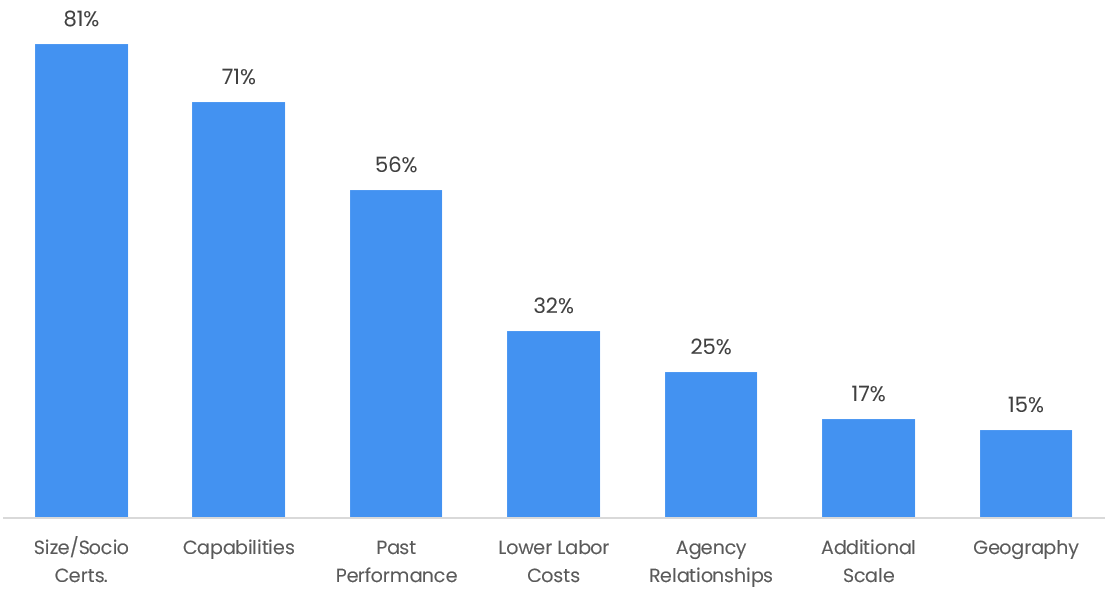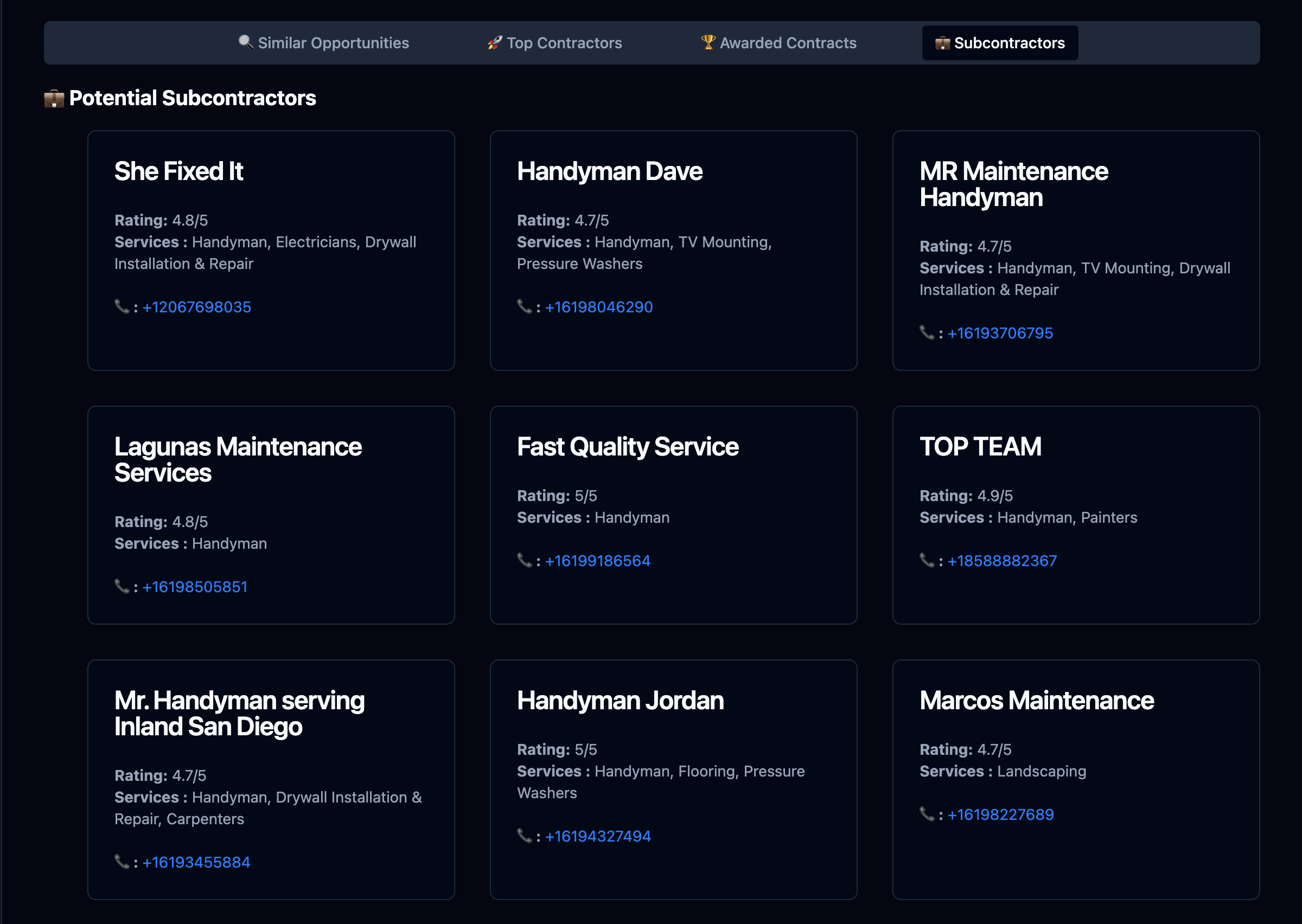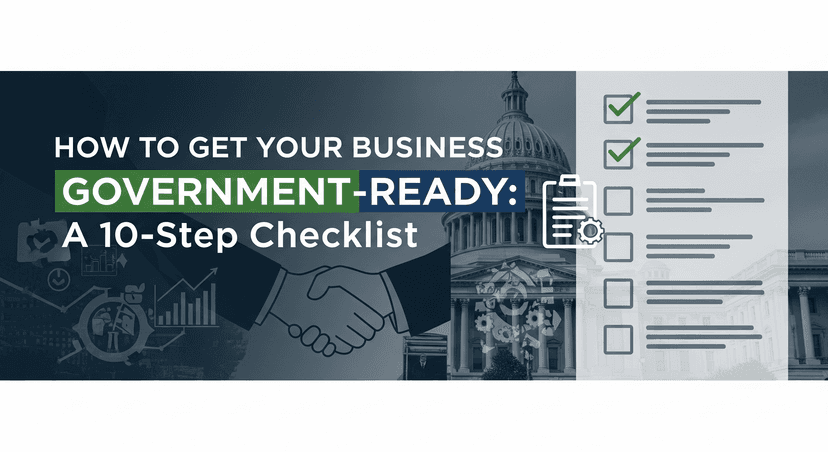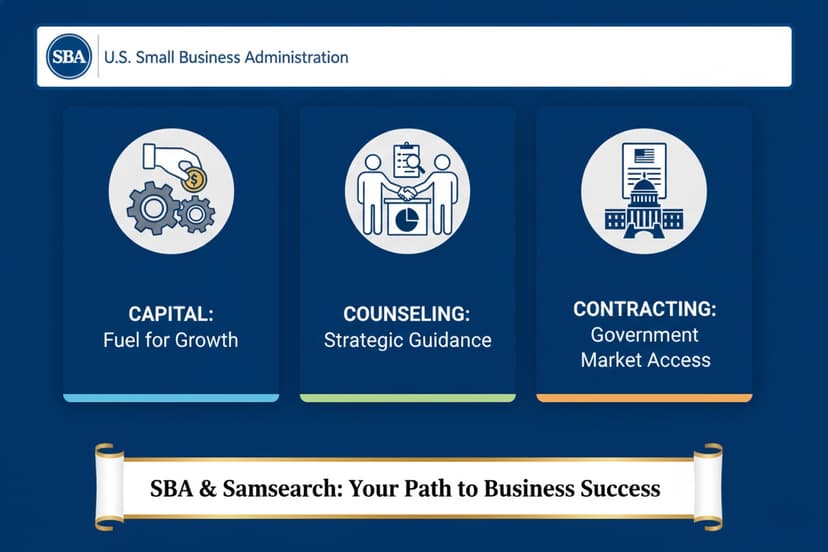How to Find Subcontractors in Government Contracting

Introduction
Government subcontracting is an important part of getting big projects done. When a company wins a government contract, they often need help from other businesses, called subcontractors, to complete specific tasks. This teamwork allows the main contractor to handle the job more efficiently and ensure everything meets government standards.
Subcontractors are key players because they bring in the skills and expertise that the main contractor might not have. For example, think about Tesla, which relies on numerous part suppliers to build its cars, or Amazon, which uses other companies for last-mile delivery to get packages to your door. These companies act like subcontractors, playing a crucial role in the success of larger businesses.
 Example of subcontracting: Amazon subcontracts last-mile delivery to sucontractors to get packages to your door
Example of subcontracting: Amazon subcontracts last-mile delivery to sucontractors to get packages to your door
 Example of subcontracting: Tesla relies on numerous part suppliers to build its cars
Example of subcontracting: Tesla relies on numerous part suppliers to build its cars
In the same way, subcontractors in government contracts help ensure projects are done well, on time, and within budget. They are vital to making government contracts successful.
Understanding Government Subcontracting
Government subcontracting involves a primary contractor, often referred to as the prime contractor, who has won a government contract and hires other businesses, known as subcontractors, to complete specific parts of the project. Subcontractors provide specialized skills or services that help the prime contractor fulfill the contract’s requirements.
Types of Government Contracts and Subcontracting Opportunities
There are different types of government contracts, each offering various opportunities for subcontracting:
- Fixed-Price Contracts: The government pays a set price for the work. Subcontractors are often hired to manage specific tasks that fall within the fixed budget.
- Cost-Reimbursement Contracts: The government covers the actual costs of the work, plus an additional fee. Subcontractors might be used to handle complex or specialized portions of the project.
- Indefinite-Delivery Contracts: These are flexible contracts that don't specify an exact amount of work or a precise delivery date. Subcontractors can be brought in as needed to meet project demands.
Prime Contracts vs. Subcontracts
A prime contract is the main contract awarded by the government to a business (the prime contractor). The prime contractor is responsible for the overall project but may subcontract portions of the work to other companies. Subcontracts are these smaller agreements where the subcontractor completes a specific part of the job under the prime contractor’s guidance.
 The government subcontracting process
The government subcontracting process
Simplified Acquisitions and Micro-Purchases
These are smaller-scale government purchases that are less formal and quicker to execute.
- Simplified Acquisitions: These are government purchases that fall under a certain dollar threshold, making the procurement process faster and simpler. Subcontractors might be engaged to provide quick, specialized services under these contracts.
- Micro-Purchases: These are very small purchases, typically under $10,000, where the government can buy directly from vendors without a formal bidding process. While not typical for subcontracting, businesses might still be involved in providing goods or services for these small purchases.
Understanding these concepts is key to navigating the world of government subcontracting, whether you're looking to become a prime contractor or find opportunities as a subcontractor.
Benefits of Government Subcontracting
Access to Large Contracts and Steady Work
One of the main benefits of government subcontracting is the opportunity to work on large, high-value contracts. By partnering with prime contractors, subcontractors can access significant projects that might be out of reach if they were bidding alone. These contracts often provide a steady stream of work, offering long-term stability and the chance to contribute to major initiatives.
Gaining Experience and Building a Reputation
For businesses looking to enter the government contracting space, subcontracting offers a way to gain experience without taking on the full responsibility of a prime contract. Successfully completing subcontracting work can help a business build a solid reputation for reliability and quality, making it easier to secure more contracts in the future, whether as a subcontractor or even as a prime contractor.
Geographic Reach
Government subcontracting can allow businesses to expand their geographic footprint. By working on projects in different regions, subcontractors can increase their market presence and gain experience in new locations. This broader reach can open up additional opportunities and help businesses grow in areas they might not have considered before.
Access to Experienced Companies
Subcontracting gives smaller or newer businesses the chance to work alongside more experienced companies. This collaboration provides learning opportunities and exposure to best practices in the industry. Subcontractors can benefit from the knowledge and expertise of established firms, helping them improve their own processes and capabilities.
Past Performance and Track Record
Building a track record of successful past performances is crucial in government contracting. By completing subcontracting work effectively, businesses can demonstrate their ability to deliver quality results. This history of successful projects can be a valuable asset when bidding for future contracts, as it shows that the business is capable and reliable.
Size and Socioeconomic Certifications
Many government contracts have specific requirements for subcontracting to small businesses or those with socioeconomic certifications, such as minority-owned, woman-owned, or veteran-owned businesses. Subcontracting allows businesses with these certifications to participate in government contracts that might otherwise be too large or complex to handle alone. It also helps prime contractors meet their subcontracting goals and comply with government regulations.
 Survey results on why government contracting companies subcontract.
Survey results on why government contracting companies subcontract.
Limitations on Subcontracting

Government contracts, particularly those set aside for small businesses, come with specific limitations on subcontracting. These limitations are designed to ensure that the prime contractor, especially if they are a small business or have specific socioeconomic certifications, performs a significant portion of the work themselves rather than passing off most of the work to subcontractors.
For example, in service contracts, the prime contractor must perform at least 50% of the cost of the contract, excluding materials and overhead, with its own employees. In general construction contracts, at least 15% of the contract must be performed by the prime contractor, excluding the cost of materials. For specialty trades like electrical or plumbing, the prime contractor must perform at least 25% of the work. These percentages can vary depending on the specific type of contract and the governing regulations.
Compliance with the FAR (Federal Acquisition Regulation) and Other Regulations
The Federal Acquisition Regulation (FAR) is the primary set of rules that governs all government contracting, including subcontracting limitations. For instance, FAR 52.219-14, which outlines the limitations on subcontracting, specifies the minimum amount of work that must be performed by the prime contractor on various types of contracts. Compliance with the FAR is crucial for both prime contractors and subcontractors to avoid penalties, contract termination, or disqualification from future contracts.
Other important regulations include those from the Small Business Administration (SBA), which further defines subcontracting limitations for small business set-asides. The SBA’s 13 CFR § 125.6 provides detailed guidance on how these limitations apply to various contract types. It’s important for contractors to stay up to date with these rules, as they can be subject to changes.
Impact on Subcontracting Plans and Performance
The limitations on subcontracting can significantly influence how prime contractors structure their subcontracting plans. They must carefully balance the amount of work they subcontract to ensure compliance while still leveraging the skills and expertise of their subcontractors.
For example, if a small business prime contractor fails to perform the required percentage of work, it could face penalties, including financial penalties or even termination of the contract. Moreover, non-compliance can negatively impact a contractor’s performance rating, which is critical when bidding for future contracts. A low performance rating can make it more difficult to win contracts, especially in a competitive environment.
For subcontractors, understanding these limitations is equally important. It helps them gauge the scope of work they can expect to receive and ensures they are part of a compliant team. Subcontractors should be aware of these rules when negotiating contracts and planning their contributions to avoid issues down the line.
For more detailed information on subcontracting limitations, you can refer to the Federal Acquisition Regulation (FAR) Part 19 and the SBA’s official guidelines.
How to Find Government Subcontracting Opportunities
Navigating Government Portals and Databases
Finding subcontracting opportunities often starts with understanding how to navigate government portals and databases. The primary platform for discovering government contracts is the System for Award Management (SAM), where all federal procurement opportunities are listed. SAM allows you to search for contracts by keyword, agency, location, and other criteria. For subcontractors, it's essential to monitor these opportunities regularly and identify contracts where your services might be needed.
Another valuable resource is the Federal Procurement Data System (FPDS), where you can review past contract awards and understand the types of projects that are commonly subcontracted. This historical data can help you identify prime contractors that frequently work with subcontractors, providing a starting point for outreach and networking.
Tips for Searching and Identifying Opportunities
When searching for subcontracting opportunities, it’s important to use specific keywords related to your industry and services. Set up alerts on SAM and other portals to receive notifications about new opportunities that match your capabilities. Reviewing the scope of work in each contract is crucial to determining where your services could add value.
Additionally, networking plays a significant role in finding opportunities. Attend industry events, webinars, and government contracting seminars where you can meet prime contractors and learn about upcoming projects. Building relationships with key players can increase your chances of being considered for subcontracting roles.
Leveraging Resources like the SBA and Industry Associations
The Small Business Administration (SBA) offers several resources to help you find subcontracting opportunities. Their SubNet portal is specifically designed to connect small businesses with prime contractors looking for subcontractors. Industry associations also often have networking events and directories that can help you connect with potential partners.
SAMSearch Subcontracting Feature: A Smarter Way to Find Opportunities
Finding the right subcontracting opportunities can be time-consuming, but our platform, SAMSearch, simplifies the process. Our AI-powered subcontracting feature goes beyond just listing government contracts—it actively analyzes each opportunity to identify potential subcontractors who would be a perfect fit for the job.
Here’s how it works:
For every government contracting opportunity listed on SAM, our AI tool scans through the requirements and matches them with a curated list of qualified subcontractors. The feature provides you with contact information, reviews, and other relevant details about these subcontractors, making it easier to find and connect with the right partners.
With Samsearch, you don’t have to spend hours searching for the right subcontractors. Instead, you get a tailored list of candidates who can perform the specific tasks requested in the government contract. This not only saves time but also increases your chances of successful collaboration and project completion.
 Easily find a list of potential subcontractors on Samsearch
Easily find a list of potential subcontractors on Samsearch
Try it now here
Subcontract Agreement Template
Importance of a Well-Structured Subcontract Agreement
A well-structured subcontract agreement is crucial for defining the roles, responsibilities, and expectations of both the prime contractor and the subcontractor. This document serves as the foundation of the working relationship, helping to prevent misunderstandings, disputes, and legal issues. A clear and detailed agreement ensures that both parties are aligned on project scope, timelines, payment terms, and other critical aspects of the contract.
Without a solid subcontract agreement, there can be significant risks, including scope creep, payment delays, and disagreements over deliverables. A well-crafted agreement protects both parties and provides a clear path to resolving any issues that may arise during the project.
Key Elements and Clauses to Include in a Subcontract Agreement
When drafting a subcontract agreement, it’s important to include the following key elements and clauses:
-
Scope of Work (SOW): Clearly define the tasks and responsibilities that the subcontractor will be expected to perform. This should include specific deliverables, timelines, and milestones.
-
Payment Terms: Outline the payment structure, including how much the subcontractor will be paid, the payment schedule, and any conditions that must be met before payment is released.
-
Performance Standards: Specify the quality standards and performance metrics that the subcontractor must meet. This can include deadlines, workmanship standards, and compliance with relevant regulations.
-
Confidentiality and Non-Disclosure: Include clauses that protect sensitive information shared between the prime contractor and subcontractor, ensuring that proprietary information is kept confidential.
-
Indemnification and Liability: Define the responsibilities of each party in case of damages, losses, or legal claims. This clause protects both parties by outlining who is responsible for what in the event of a dispute.
-
Termination Conditions: Clearly state the conditions under which the subcontract can be terminated by either party. This should include notice periods and any penalties for early termination.
-
Dispute Resolution: Outline the process for resolving disputes, whether through negotiation, mediation, arbitration, or legal action. This clause helps avoid costly and time-consuming legal battles.
-
Compliance with Laws and Regulations: Ensure that the subcontractor agrees to comply with all relevant laws, regulations, and the terms of the prime contract, including those related to safety, labor, and the environment.
-
Amendment and Modification: Include a clause that details how the agreement can be amended or modified, ensuring that any changes are documented and agreed upon by both parties.
Example Template and Customization Tips
Below is a simplified example of a subcontract agreement template. This template should be customized to fit the specific needs of your project and the requirements of the prime contract.
Subcontract Agreement
This Subcontract Agreement ("Agreement") is entered into as of [Date], by and between [Prime Contractor Name] ("Prime Contractor") and [Subcontractor Name] ("Subcontractor").
-
Scope of Work (SOW)
- The Subcontractor agrees to perform the following tasks: [Detailed description of work, deliverables, and timelines].
-
Payment Terms
- The Prime Contractor agrees to pay the Subcontractor [Amount] according to the following schedule: [Payment schedule and conditions].
-
Performance Standards
- The Subcontractor shall meet the following performance standards: [Details on quality, deadlines, and compliance requirements].
-
Confidentiality and Non-Disclosure
- Both parties agree to keep all shared confidential information private and not disclose it to third parties.
-
Indemnification and Liability
- The Subcontractor agrees to indemnify and hold harmless the Prime Contractor from any claims, damages, or losses arising from the Subcontractor's work.
-
Termination
- This Agreement may be terminated by either party with [Number] days' notice. Termination under certain conditions may incur penalties.
-
Dispute Resolution
- Any disputes arising under this Agreement will be resolved through [Negotiation/Mediation/Arbitration].
-
Compliance with Laws
- The Subcontractor agrees to comply with all applicable laws, regulations, and the terms of the Prime Contract.
-
Amendment and Modification
- Any changes to this Agreement must be made in writing and signed by both parties.
IN WITNESS WHEREOF, the parties hereto have executed this Subcontract Agreement as of the date first above written.
[Prime Contractor Signature] [Date]
[Subcontractor Signature] [Date]
Subaward vs. Subcontract
Definition and Differences Between Subawards and Subcontracts
Subawards and subcontracts are both types of agreements used in the context of government contracts and grants, but they serve different purposes and have distinct characteristics.
-
Subaward: A subaward is a type of financial assistance provided by a pass-through entity (often a prime awardee) to a subrecipient to carry out part of a federal award. The subrecipient typically has a significant amount of independence in how they conduct their work. Subawards are commonly used in research, education, and non-profit sectors where collaborative efforts are required to achieve the goals of a grant or cooperative agreement.
-
Subcontract: A subcontract, on the other hand, is a formal agreement between a prime contractor and another party (the subcontractor) to perform a portion of the work outlined in the prime contract. Subcontracts are typically used in business transactions where specific tasks or services need to be outsourced to another company or individual, with the subcontractor being directly accountable to the prime contractor for the work performed.
Key Differences:
- Purpose: Subawards are about distributing funds to achieve programmatic goals, while subcontracts are focused on procuring goods or services to fulfill contractual obligations.
- Relationship: In a subaward, the subrecipient operates independently with oversight from the pass-through entity, whereas in a subcontract, the subcontractor works under the direct supervision and control of the prime contractor.
- Compliance: Subawardees must comply with the requirements of the federal award, while subcontractors must adhere to the terms and conditions of the prime contract.
When to Use Each Type and Their Respective Requirements
-
When to Use a Subaward: Use a subaward when you need to delegate part of a federal grant or cooperative agreement to another organization to carry out programmatic activities. The subrecipient should have the ability to independently make decisions about how to use the funds and conduct their portion of the work. Subawardees are usually subject to audit and must follow federal grant guidelines, including Uniform Guidance under 2 CFR Part 200.
-
When to Use a Subcontract: Use a subcontract when you need to hire another entity to perform specific tasks, supply goods, or provide services that are essential to fulfilling the prime contract. The subcontractor is typically selected based on their expertise, and the work they do is more controlled and directed by the prime contractor. The subcontractor must comply with the terms of the prime contract and is often subject to flow-down clauses that mirror the obligations of the prime contractor.
Requirements:
- Subaward: Requires monitoring to ensure compliance with the programmatic and financial requirements of the federal award, including reporting, audit, and performance evaluations.
- Subcontract: Requires adherence to the specific terms and conditions set by the prime contract, including performance standards, deliverables, timelines, and compliance with relevant regulations such as the Federal Acquisition Regulation (FAR).
Examples of Scenarios for Subawards and Subcontracts
-
Example of a Subaward: A university receives a federal grant to conduct environmental research. The university issues a subaward to another research institution to perform a portion of the study in a specific geographic area. The subrecipient is responsible for managing its own portion of the research, adhering to the grant's guidelines, and reporting its findings to the prime awardee.
-
Example of a Subcontract: A construction company wins a federal contract to build a new government facility. The company issues a subcontract to an electrical firm to handle all electrical installations for the project. The electrical firm must complete the work according to the specifications outlined in the prime contract and under the direct supervision of the construction company.
Understanding when to use a subaward versus a subcontract is crucial for ensuring compliance and successful execution of federal awards and contracts. Properly classifying these agreements helps manage risk and ensures that all parties fulfill their respective obligations.
Conclusion
In this blog, we've explored the essentials of government subcontracting, including the definitions, benefits, and key differences between subawards and subcontracts. We also discussed the importance of having a well-structured subcontract agreement and how to navigate the complexities of government regulations. Whether you’re a prime contractor or a potential subcontractor, understanding these concepts is crucial for successfully engaging in government contracts.
Government subcontracting offers numerous opportunities for businesses of all sizes to grow, network, and gain valuable experience. By taking the time to understand the processes and leveraging the right tools, you can unlock access to large contracts and establish strong partnerships.
We encourage you to explore the vast opportunities that government subcontracting presents. And remember, finding the right subcontractors doesn't have to be complicated. Our AI-powered subcontractor discovery feature makes it easy to connect with qualified partners with just a click. Try it out today and see how it can streamline your search for the perfect subcontractors, helping you focus on delivering quality results and driving your business forward.
About Samsearch
Samsearch is an all-in-one platform that streamlines the entire government contracting process. Our solution brings together discovery, management, compliance, and proposal drafting — eliminating the need for multiple disjointed government contracting softwares.













